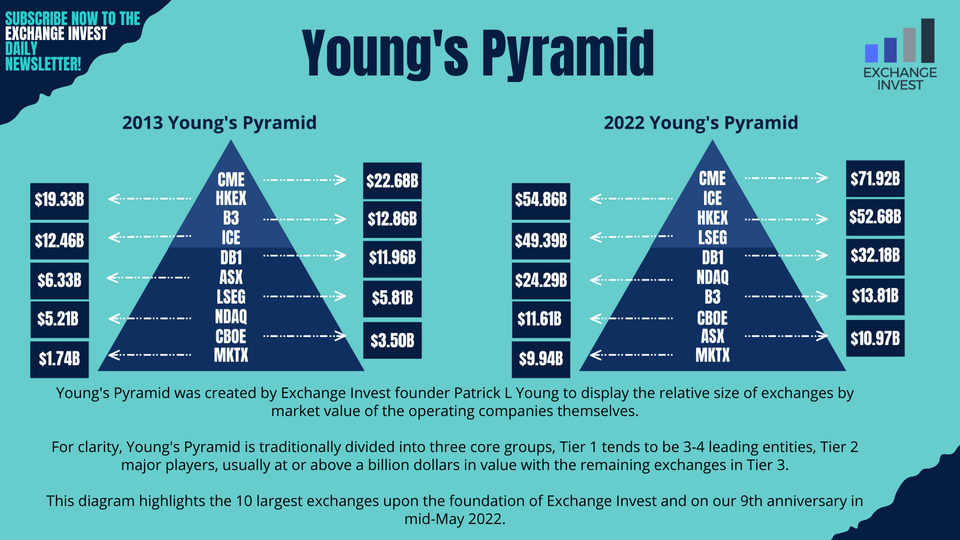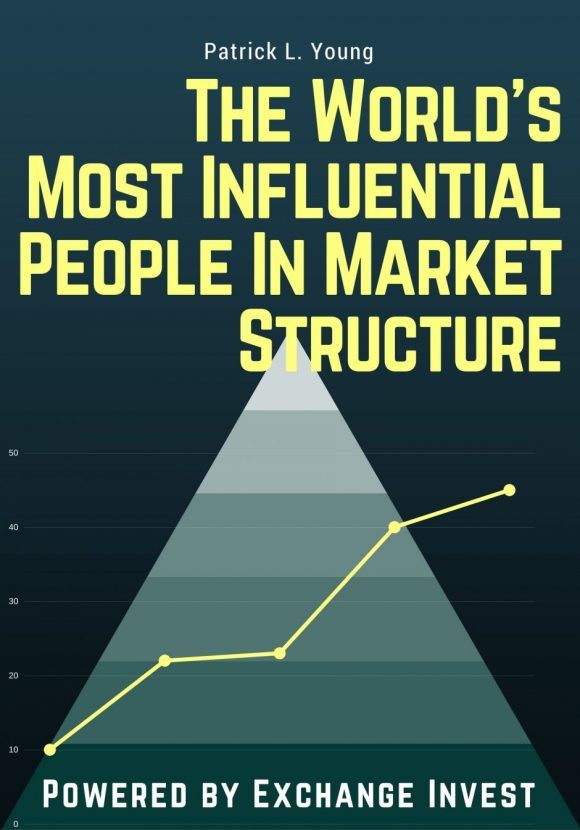Exchange Invest 9 Years On Reflections From Young’s Pyramid

Years back I created the eponymous “Young’s Pyramid” to illustrate the relative value of exchanges around the world. It remains a useful tool for crystalising the operating companies of market structure by their market capitalization and is increasingly transparent with fewer privately held companies now that most major exchanges are publicly listed.
Exchange Invest - “The Exchange of Information” celebrated its 9th birthday last week and that was an apt moment to compare/contrast some of the leading exchanges’ fortunes over the years that Exchange Invest has been directly analysing the ‘parish’ of exchanges.
CME Group has remained in the lead - although it has been frequently challenged, particularly in recent years. The largest relative loser in rank terms is B3 which has dropped from a Tier 1 entity to the middle ranks of tier 2. London Stock Exchange has been a dramatic gainer of market capitalisation, partly due to a share price acceleration, various elements of frenetic acquisition from the Rolet era and more recently the “bulking up” effect through acquiring Refinitiv.
Unsurprisingly, values are (mostly) much higher. Disappointments here include ASX which while appreciating, is relatively becalmed compared to most equivalent parish entities.
Intercontinental Exchange and Nasdaq both reflect material change as well as capital appreciation as they have, respectively, enhanced their core exchange businesses with additional entities exploiting their core technology. Their perceived management advantage perhaps is more muted in overall valuation terms despite a proven track record in execution excellence which has been lacking in some peers.
Excluded here are firms that could make the top ten in 2022 but weren’t around in 2013. Most notably Coinbase - which was briefly the largest exchange property in the pyramid but since then has endured a crushing collapse in just over a year almost equivalent in stock price terms to the appreciation of various legacy exchanges from 2013 to 2022. Similarly, Tradeweb could make this list in 2022 but was a privately held entity when Exchange Invest was born. Then again as we mark the 9th anniversary of Exchange Invest it’s a moot point just whether all of the upstart crypto markets will survive as a serious crypto winter hits that sector.
Another intriguing issue is how the exchanges here - predominantly multi asset what I term “department store” businesses have mostly diversified to some greater or lesser extent over the years as a result of one key factor: the exchange model remains the cornerstone of e-commerce and thus pretty much every exchange has seen valuation growth through the 9 year history of Exchange Invest, not merely the larger players shown here.
On that optimistic note, as the exchange model remains a robust means to generate shareholder value and deliver economic growth through its services, here’s to another exciting year for the business of bourses…with - of course - ongoing pithy insight to be found in #ExchangeInvest.
P.S. If you are passionate about markets like us, perhaps you could help spread the word about our content pertaining to the business of bourses?
At the least can you like this article, or leave us a comment, we welcome your feedback.









Member discussion